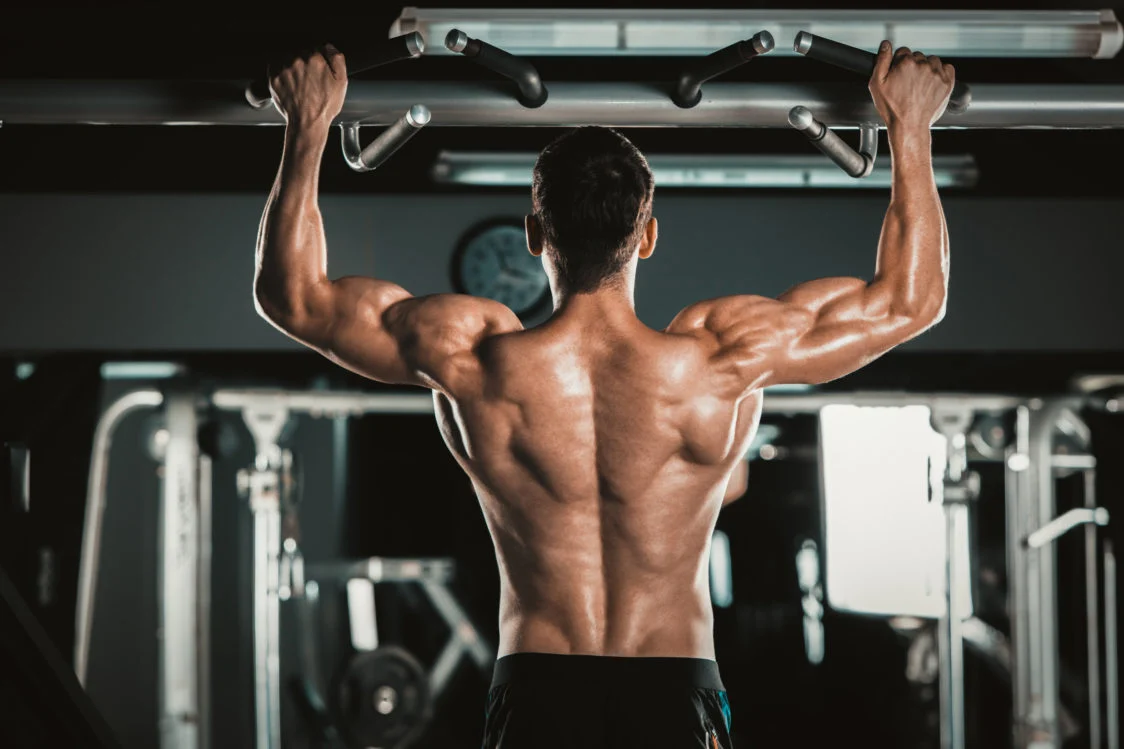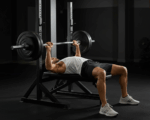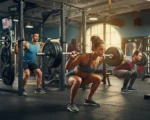Shoulder exercises are essential for developing strength, stability, and balance in your upper body. Whether you’re a gym enthusiast, an athlete, or someone striving for an impressive physique, strong shoulders can enhance performance, improve posture, and prevent injuries. This article dives into the best shoulder exercises, correct techniques, and common mistakes to avoid, so you can achieve your fitness goals effectively.
Why Are Shoulder Exercises Important?
Your shoulders are one of the most versatile and dynamic muscle groups. Comprised of the deltoid muscles, your shoulders allow for a wide range of motion, including flexion, extension, abduction, and rotation. This flexibility, however, also makes them prone to instability and injury. Regularly incorporating shoulder exercises into your routine helps:
- Enhance Performance: Building shoulder strength improves your ability to push, pull, and lift in other workouts or sports.
- Improve Posture: Strong shoulders contribute to a balanced upper body, reducing the risk of slouching and related discomfort.
- Prevent Injuries: Strengthened shoulders stabilize the joints, reducing the risk of dislocations and overuse injuries.
- Achieve Aesthetic Goals: Defined shoulders can create the «V-taper» look, enhancing your physique.
Top Shoulder Exercises to Add to Your Routine
To effectively target the shoulder muscles, you need a mix of compound and isolation exercises. Here are the top shoulder exercises that provide both strength and muscle growth:
1. Overhead Shoulder Press (Barbell or Dumbbell)
This is a classic compound movement that targets the anterior (front) and lateral (side) deltoids.
How to do it:
- Hold a barbell or dumbbells at shoulder height with palms facing forward.
- Press the weight up overhead until your arms are fully extended.
- Lower back down slowly.
Pro Tip: Avoid arching your back by engaging your core throughout the movement.
2. Lateral Raises
Perfect for isolating the lateral deltoid muscles, lateral raises widen your shoulders.
How to do it:
- Hold a dumbbell in each hand at your sides.
- Lift your arms out to the sides until they’re parallel to the floor.
- Slowly lower the weights back to the starting position.
Pro Tip: Use a controlled motion instead of swinging the weights to avoid momentum.
3. Front Raises
Ideal for targeting the anterior deltoid muscle.
How to do it:
- Hold a dumbbell in each hand, palms facing your body.
- Raise one or both arms in front of you until they’re at shoulder height.
- Lower the weights slowly.
Pro Tip: Keep your shoulders down and back to maintain proper alignment.
4. Arnold Press
A variation on the overhead press, the Arnold Press targets all three heads of the shoulder.
How to do it:
- Start with dumbbells in front of your chest, palms facing you.
- Rotate your wrists as you press the weights overhead, ending with palms facing forward.
- Reverse the motion as you bring the weights back down.
Pro Tip: Focus on the rotation for full activation of the shoulder muscles.
5. Rear Delt Fly
This exercise isolates the rear (posterior) delts, an often-neglected muscle group.
How to do it:
- Lean forward with dumbbells in each hand, arms extended toward the floor.
- Lift your arms out to the sides until they’re parallel to the floor.
- Slowly return to the starting position.
Pro Tip: Brace your core and avoid rounding your back.
6. Upright Rows
This movement primarily engages the lateral and anterior heads of the shoulders.
How to do it:
- Hold a barbell or dumbbells with an overhand grip.
- Pull the weights up to your collarbone, keeping your elbows higher than your wrists.
- Lower the weights slowly.
Pro Tip: Avoid excessive weight to prevent strain on the shoulder joints.
7. Kettlebell Halo
Excellent for building shoulder stability and mobility.
How to do it:
- Hold a kettlebell close to your chest with both hands.
- Rotate the kettlebell around your head in a smooth motion, keeping your core tight.
- Reverse the direction after a few reps.
Pro Tip: Use a light kettlebell and move slowly to avoid hitting your head or neck.
Common Shoulder Training Mistakes to Avoid
Building stronger and healthier shoulders involves more than just lifting weights. Here are some common mistakes to steer clear of:
- Using Too Much Weight
Lift weights you can control to avoid compromising your form.
- Neglecting Warm-Up
Stretching and warming up your shoulders reduces the risk of injury. Include exercises like arm circles and light resistance band work.
- Overtraining Shoulders
Shoulder muscles are smaller and recover slower than larger muscle groups. Overtraining can lead to injury and stalled progress.
- Ignoring Rear Delts
Most people focus on the anterior and lateral shoulder muscles, forgetting the rear delts. Balance your workouts by incorporating exercises like rear delt flys and face pulls.
Creating an Effective Shoulder Workout Routine
For well-rounded shoulder development, integrate a combination of the above exercises into your fitness routine. Here’s a sample workout plan:
- Overhead Shoulder Press — 4 sets of 8-10 reps
- Lateral Raises — 3 sets of 12-15 reps
- Arnold Press — 3 sets of 10 reps
- Rear Delt Flys — 3 sets of 12-15 reps
- Upright Rows — 3 sets of 10-12 reps
Adjust the sets, reps, and weights based on your fitness level and goals. Pair your workout with proper nutrition and recovery for the best results.
The Bottom Line
Strong, defined shoulders are an essential part of a balanced physique and athletic performance. By incorporating a variety of shoulder exercises that target all three heads of the shoulder, you’ll not only enhance strength but also boost your overall upper-body aesthetics.
Get started with the exercises mentioned above, and set yourself up for success by mastering your form and avoiding common mistakes. Whether you’re a seasoned athlete or just someone looking to improve your fitness levels, regular shoulder training is key to achieving your goals.
Start building your dream shoulders today with these expert-approved exercises! For more workout guides and tips, make sure to check out Men’s Health’s Shoulder Workouts.








